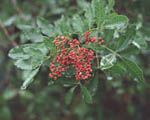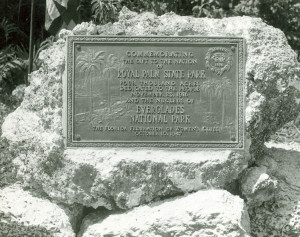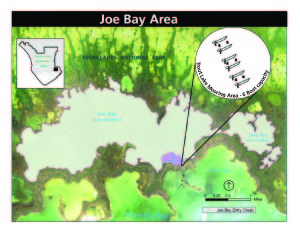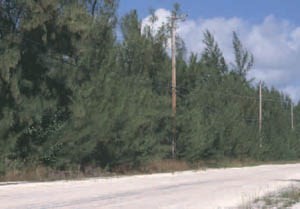 Around 26 percent of the animals and birds in South Florida are exotic; this area also happens to have one of the highest numbers of exotic plants in the world. Because of this, the Everglades has suffered in many ways, including losing many native plant and animal species. Currently, the cost to control invasive species is $500 million a year, but there is still 1.7 million acres of land in South Florida, including the Everglades, that is still infested with these invasive species. One such invasive species is the Brazilian Pepper plant.
Around 26 percent of the animals and birds in South Florida are exotic; this area also happens to have one of the highest numbers of exotic plants in the world. Because of this, the Everglades has suffered in many ways, including losing many native plant and animal species. Currently, the cost to control invasive species is $500 million a year, but there is still 1.7 million acres of land in South Florida, including the Everglades, that is still infested with these invasive species. One such invasive species is the Brazilian Pepper plant.
The Brazilian Pepper plant is a bushy, evergreen tree; it can have multiple trunks and branches. The plant ranges from 15 feet to 30 feet in height. It produces tiny white flowers and red berries. The berries are similar to holly berries, so the plant is also referred to as the Florida holly.
This plant came over to this country from Brazil/Argentina/Paraguay in the 1840s to be used for ornamental purposes. However, over the years, it has spread and invaded pinelands, hammocks, mangrove forests, farmlands, and roadsides. How is this plant spreading? Animals and birds, like racoons and robins, are known to eat and move the berries long distances, which is helping the plant spread.
It is an aggressive plant. In fact, it is considered to be one of the most invasive plants that is in Florida covering around 700,000 acres of land. There are large, dense forests of this plant adjacent to mangroves along the southwest part of the Everglades and the coastal areas of both South Florida and the west central part of the state.
The plant is fire resistant and salt tolerant. Not only does this plant produce chemicals that suppress the growth of native plants, but this plant is harmful to humans. The chemicals found in the Brazilian Pepper plant’s leaves, flowers, and fruits can cause irritation of the skin and respiratory system. The berries also have been known to have a toxic effect or act as a narcotic to the native birds and other wildlife. This
Because it is an invasive, aggressive plant, it is illegal to plant or sell this plant in Florida.
Visit the Everglades
The Everglades is a breath-taking sight, but unfortunately a lot of the plant and animal life are disappearing from human interference, climate change, and invasive species, like the Brazilian Pepper plant. Fortunately, there are conservations plans put in place now working at fixing the damage done to this beautiful wetland. Come check out this amazing place on an airboat tour with Captain Mitch. To schedule a tour, click here or call 800-368-0065.
 The Everglades is vast, and it has so many different areas for people to explore. One such area is Royal Palm State Park. This Park was established in 1916, but it was surveyed back in 1847 by Jack Jackson. Scientists studied the area and it became known for its botanical diversity and hammock.
The Everglades is vast, and it has so many different areas for people to explore. One such area is Royal Palm State Park. This Park was established in 1916, but it was surveyed back in 1847 by Jack Jackson. Scientists studied the area and it became known for its botanical diversity and hammock. In case you missed it, Everglades National Park opened both Joe Bay and Snag Bay back up to the public on November 24, 2016. This is the first time in more than 30 years these bays have been opened to the public. Joe Bay, which is adjacent to Snag Bay in the park, is now the area’s first “catch-and-release” fishing area.
In case you missed it, Everglades National Park opened both Joe Bay and Snag Bay back up to the public on November 24, 2016. This is the first time in more than 30 years these bays have been opened to the public. Joe Bay, which is adjacent to Snag Bay in the park, is now the area’s first “catch-and-release” fishing area. There are around 18,000 plants native to North America. These plants provide food, fiber, and habitats that people and wildlife depend on. Unfortunately, many invasive (non-native species) plants have become a threat to the native plants and are the second greatest threat (next to humans) to them. Many of these invasive plants have found their way into the Everglades. The Park staff work throughout the year to remove these plants whenever they can in order to protect the natural habitat. One of these invasive species is the Australian Pine (Casuarina equisetifolia).They have invaded thousands of acres in southern Florida.
There are around 18,000 plants native to North America. These plants provide food, fiber, and habitats that people and wildlife depend on. Unfortunately, many invasive (non-native species) plants have become a threat to the native plants and are the second greatest threat (next to humans) to them. Many of these invasive plants have found their way into the Everglades. The Park staff work throughout the year to remove these plants whenever they can in order to protect the natural habitat. One of these invasive species is the Australian Pine (Casuarina equisetifolia).They have invaded thousands of acres in southern Florida.





